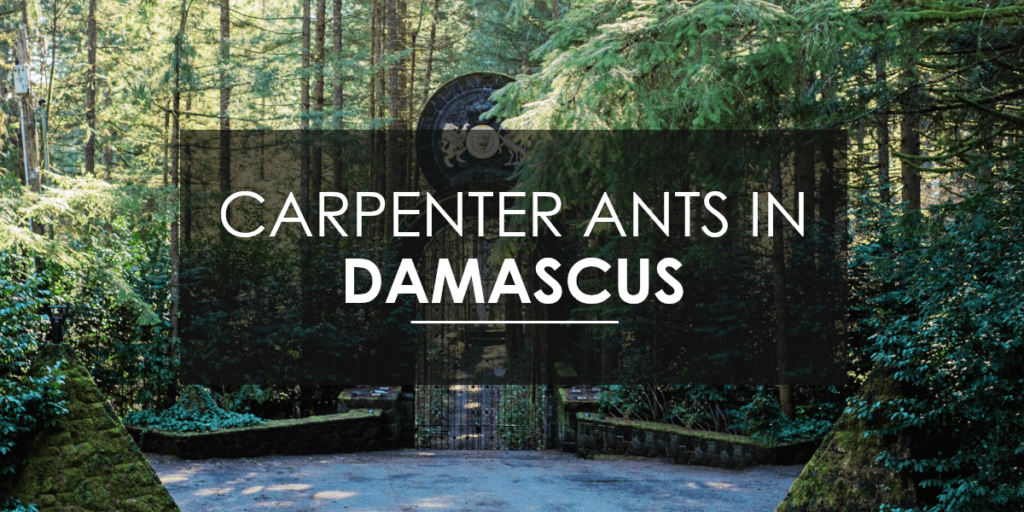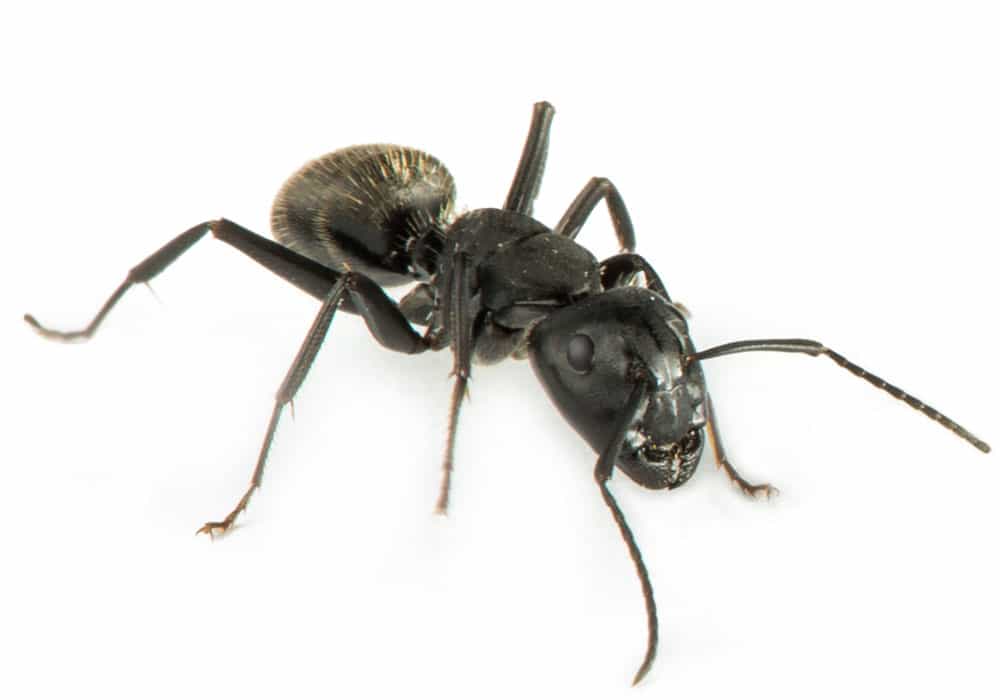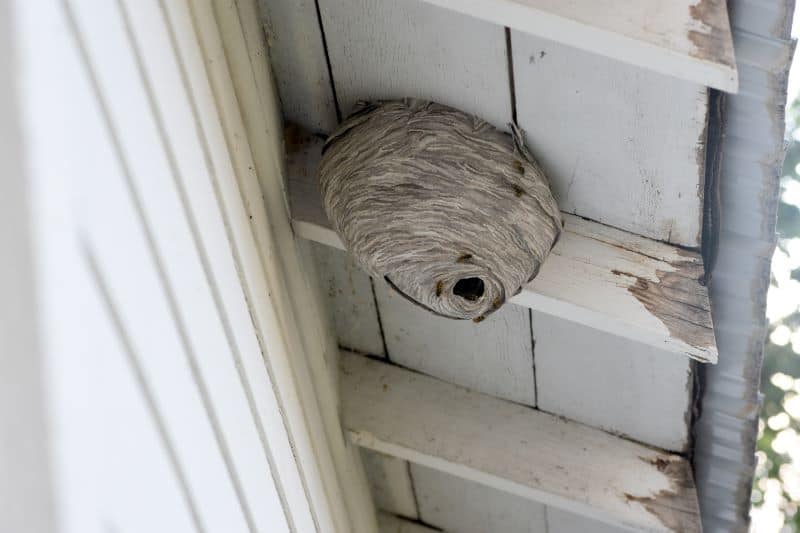Life in the Pacific Northwest is a special one. Our unique climate affords us a broader, richer array of flowering plants than many other areas of the country might experience. That greater variety of blossoms, trees, and shrubbery will often bring with it an equally diverse number of pests. The box elder bug, a perhaps lesser known though no less prevalent insect, is one such pest.
So what is a box elder? Well, a box elder is a flying insect that is generally around one-half inch in length. They possess quite a distinct appearance, with their bodies consisting of a dark brown or black hue that features dark orange to bright red markings outlining the veins of its wings as well as outlining the perimeter of its back, the latter of which is striped down the center. The box elder’s bulging eyes and underside of its abdomen share this same color. Before reaching maturity, the box elder is mostly red in color.
The box elder maple tree is where these insects get their name, as the tree’s seeds are a closely associated food and nesting site for the creatures. However, this is not their only source of food. Box elder bugs are also known to build nests and derive food from other varieties of maples, fruit, and ash trees.
Box elder bugs — can they sting or harm people?
Though the box elder bug is indeed what’s called a nuisance pest, experts do not consider them to be a physical threat to people. The box elder is also not known to be a spreader of disease. So what about them is such a nuisance? Though they are not nearly as threatening to agriculture as stink bugs, locusts, or armyworms, the box elder can cause severe and even deadly damage to the trees where they choose to nest. If you have box elder maples or some of the other trees we mentioned above, this could be of concern.
Their diet is not limited to the seeds of these trees, therefore the damage can be a little more far-reaching. Not only can they cause fruit trees to drop their fruit prematurely, they can also scar the trees, which gives it an appearance similar to cork and makes the trees vulnerable to sickness and even death.
Can box elder bugs enter my home? Will they cause damage?
The short answer is, “Yes. Box elders can enter your home.” but the damage they cause is typically not structural in nature, only cosmetic.
How do they get inside? Well, as is common with other insects, the box elder can be found gathering on the sides of your home that get the most sunlight. They’re especially prone to seeking out warmth in the fall when they’re beginning their overwintering (hibernation) phase.
It is not common for box elder bugs to be found breeding inside a home. Being close to a food source is their preference. However, when we’re experiencing cool fall weather and a home’s heating system is activated, this can cause confusion. They’re seeking warmth, and if they’re able to find an entry point into the home, inside they will come!
And if they do? Well, the voids in your home’s walls could be used for nesting. Also, this is where the cosmetic damage we mentioned earlier comes into play. The droppings from box elder bugs can damage upholstery, carpeting, drapes, and other fabrics.
The box elder, like many flying insects, are creatures of habit who tend to maintain similar flight and nesting habits year over year. So, if your property has the trees they desire for feeding and nesting, and your home has areas where they can enter, you could be facing an annual infestation problem.
How do I keep box elder bugs from infesting my home and property?
Most species of animals and insects aren’t that complex. Food, water, and shelter — that’s usually all anything needs to survive. Do that successfully and you can likely build a burgeoning colony. So if your property contains box elder or other preferred sources of food, and if your home has entry points for the pests to access your home, then it’s no wonder you’re facing an infestation. If we can remove or limit those resources from being accessible, then you’re on a path to victory in your battle against these pests.
Now, we’re never going to recommend you remove trees from your property. We know that’s more than a bit extreme. However, if you’re looking to plant trees, then we recommend planting male box elder maples, as they’re not the seed bearing kind. Still, you might see a presence of box elder bugs if there are desirable resources available, as these pests are willing to roam for as far as two miles in search of food and water.
Removing standing water from your property, as well as any seed pods that can be found on your lawn are some of the simpler things you can do to keep box elder bugs off of your property.
Box elder bugs have infested my home? What do I do?
The moment that you notice box elder bugs inside your house, call an extermination specialist! One bug likely means many, and as we stated, these insects are creatures of habit, so we want to nip their presence in the bud before they establish any patterns related to your home. Ignoring the problem will only make it worse.
Be on the lookout for box elders and other pests throughout the year. Like other insects, they follow predictable patterns. Nesting in the spring, the hatching of eggs in summer, fall is for seeking warmth to begin the process of overwintering, and winter is dormancy. Well, it’s usually dormancy, unless the box elder bugs have found a way inside the home.
So what do you do if they are inside? Depends on the size of your infestation. If it’s just a few, then capture them with your vacuum’s hose and dispose of them. (Don’t just place them outside. They’ll find their way back in the same way they got there in the first place.)
If it’s a larger infestation, and it usually is, then call a professional just like us at Aspen Pest Control! Our clients trust us with their pest control needs because, even after a single treatment, they see a massive reduction in the number of box elder bugs. Why not every bug? That’s the nature of flying insects. They’re hard to entirely eradicate. But the right combination of treatment from experts and a reduction in their most desired resources should successfully eliminate your infestation.
The best method for success lies in quarterly treatment plans. It’s through this method that we can kill off existing bugs, break flight and nesting patterns, as well as work with homeowners to identify any entry points of the home or other areas of vulnerability that pests commonly take advantage of.
We’re committed to providing you value, superior customer service, and peace of mind. Wouldn’t you love one less thing to worry about? Our team is not only a premier group of pest control experts, but they’re local, fully vetted, and completely client-focused. We’d be proud to serve you and your family’s pest control needs.








